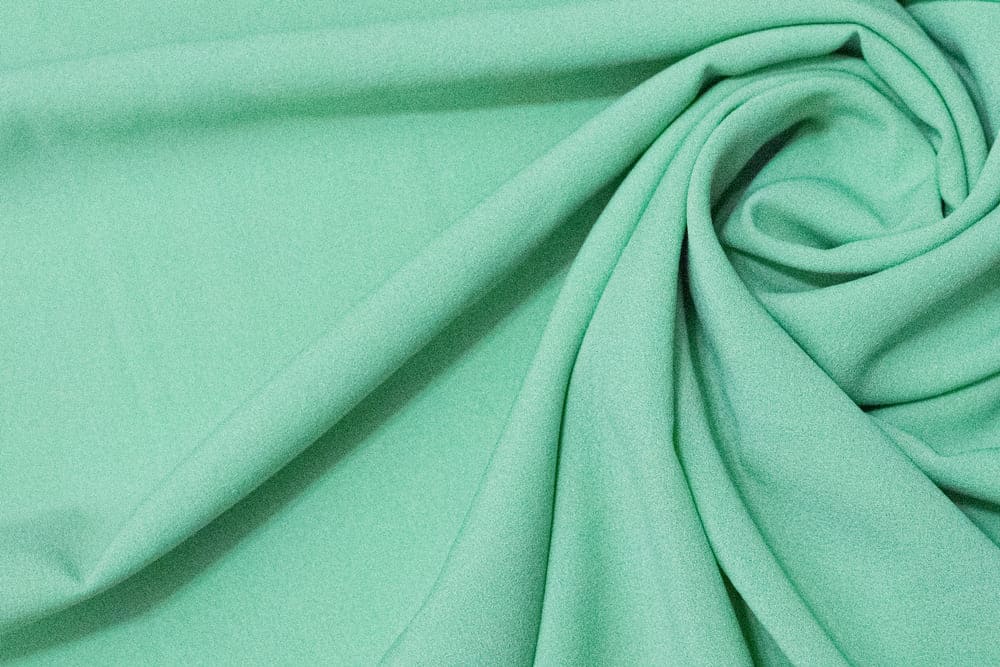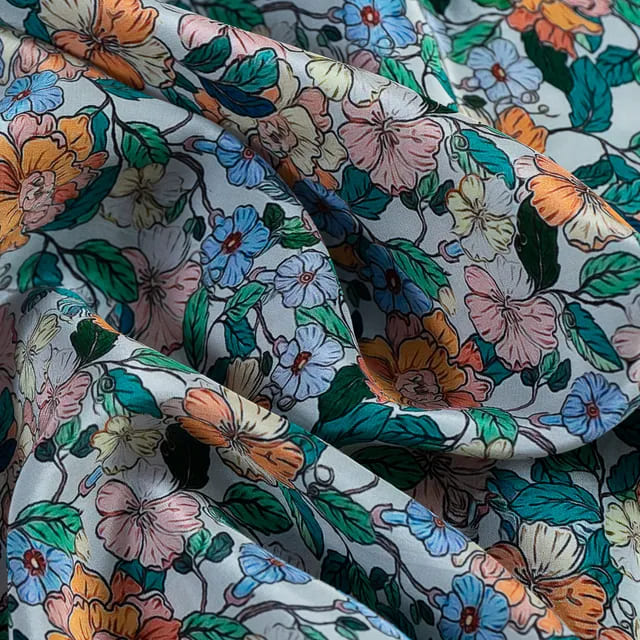- Home
- Blogs
- FabCouture
- Crepe Fabric Unveiled: Exploring the Various Types and Characteristics of this Popular Material
- Crepe Fabric...
Crepe Fabric Unveiled: Exploring the Various Types and Characteristics of this Popular Material
- By FabCouture
- • May 09, 2023

Crepe fabric has become a staple in the fashion industry due to its versatility and unique texture. In this comprehensive guide, we will explore the various types and characteristics of crepe fabric, and how you can incorporate it into your wardrobe. As a leading fashion brand, we know that crepe fabric is a favorite of many fashion enthusiasts and designers worldwide.
Let’s dive deeper in this crepe material guide to know more about ti’s properties, history, characteristics, types of crepe fabrics and how to take care of this fabric.

What is Crepe Fabric?
Crepe fabric is known for its textured surface and it’s a type of woven fabric. Crepe fabric can be made from a range of fibers including wool, silk, cotton, polyester, rayon, and nylon. The crepe effect is achieved by using a high-twist yarn and weaving it in a way that produces a slightly twisted and irregular surface.
History of Crepe Fabric
Crepe fabric has a long-standing history dating back to the early 1800s when it was initially created in Europe. Over time, crepe fabric has undergone various transformations, becoming a widely sought-after material in the fashion industry due to its distinctive texture and adaptability. It was first created in France, where it was known as "crepe de Chine," a silk fabric with a crepe-like texture. The popularity of crepe fabric grew in the 1920s when it became a favorite fabric for the flapper dress style. Since then, crepe fabric has remained a favorite in the fashion industry, with new variations and types being created.
Characteristics of Crepe Fabric
Crepe fabric has several characteristics that make it a favorite among designers and fashion enthusiasts. One of the main features is its unique texture, which gives it a luxurious and high-end feel. In addition to its unique texture, crepe fabric is also highly breathable, which makes it an excellent choice for hot and humid weather conditions. The texture of crepe fabric allows air to pass through, making it a breathable material that ensures the wearer's comfort. Additionally, crepe fabric drapes beautifully, making it ideal for dresses, blouses, and skirts.
Types of Crepe Fabric
There are various types of crepe fabric, each with its distinct texture and properties. Let’s know some of the most popular ones:
- Silk Crepe: Silk crepe is one of the most luxurious types of crepe fabric. With its soft, smooth texture and excellent draping qualities, crepe fabric has become a popular choice for high-end fashion garments. Its luxurious feel and elegant drape make it ideal for creating stunning, sophisticated outfits.
- Wool Crepe: Wool crepe is a durable and warm fabric that is well-suited for winter clothing. Its slightly rough texture gives it a unique character, making it a popular choice for suits and coats.
- Polyester Crepe: Polyester crepe is a synthetic fabric that is easy to care for and is perfect for everyday wear. Due to its elegant drape and subtle shine, it is often used for blouses and dresses, adding a touch of sophistication to any outfit.
- Cotton Crepe: Because of cotton crepe’s lightweight and breathable properties, it is perfect for summer clothing. Its airy texture provides excellent air circulation, keeping the wearer cool and comfortable in hot weather. It has a slightly crinkled texture and is often used for blouses and skirts.
How to Care for Crepe Fabric
Caring for crepe fabric is relatively easy, but it's essential to follow the care instructions to maintain its quality and texture. To ensure that your crepe fabric lasts long and retains its original texture and quality, here are some helpful tips for proper care and maintenance:
- Often wash your crepe material by hand and it is best to keep the washing machine on delicate mode.
- Use a mild detergent and cold water to avoid damaging the fabric's texture.
- It’s crepe material surface is delicate it is recommended to avoid using fabric softeners
- After washing, hang the garment to dry or lay it flat on a towel to prevent it from losing its shape.
Conclusion
Crepe fabric is a versatile and popular fabric in the fashion industry. Its unique texture, breathability, and drapability make it a favorite among designers and fashion enthusiasts worldwide. By taking good care of your crepe fabric, you can ensure that it will last for many years to come, making it a valuable addition to your wardrobe. We hope this guide has provided you with all the information you need to know about crepe fabric, from its history and characteristics to the different types available and how to care for them.
At FabCouture, we have an extensive range of the finest crepe fabrics, perfect for your next fashion project. From luxurious silk crepe to lightweight cotton crepe, we have a wide selection to choose from. Explore Fabcouture’s finest collection of crepe fabric today and discover the right crepe for your next project.
Leave a Comment
Blogs
Popular Posts
Newletter
Thanks for subscribe.

Fabcouture is an online fabric store to satisfy all your couture fabrics cravings for fabric connoisseurs. We delight in the fact that we source...
0 Comment